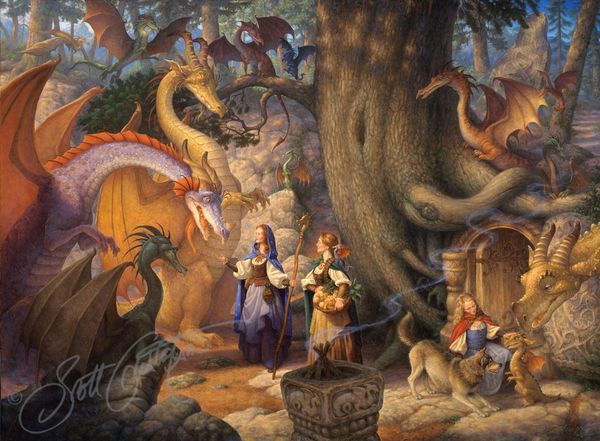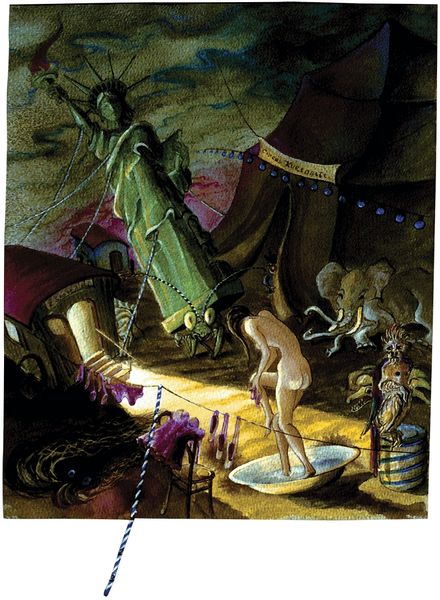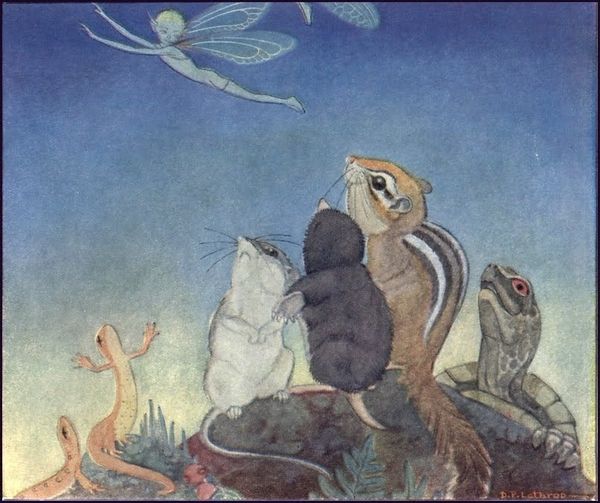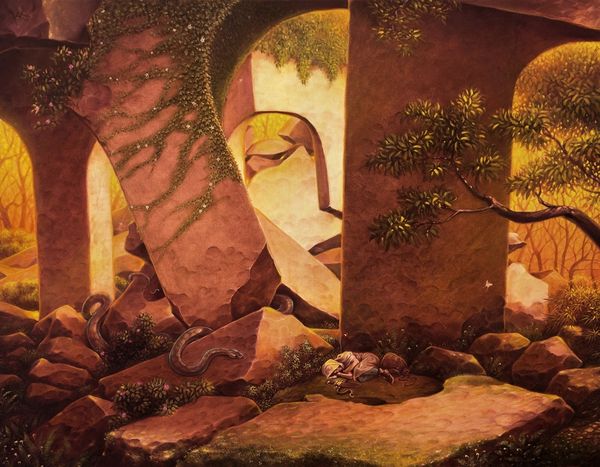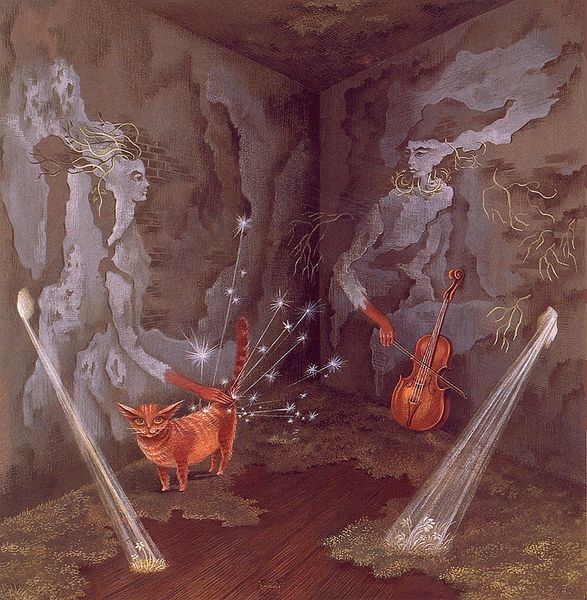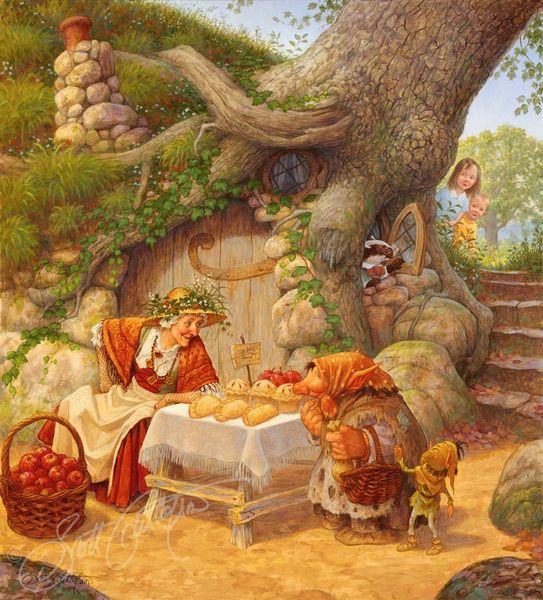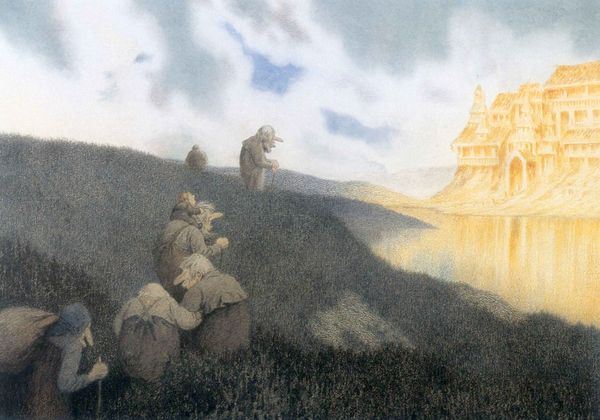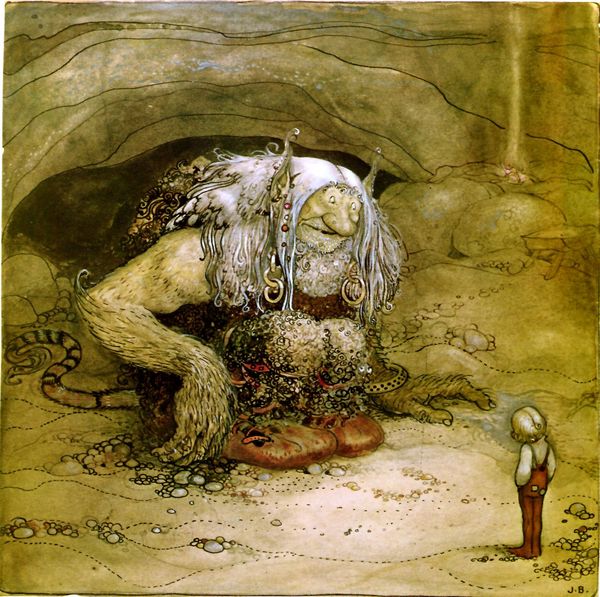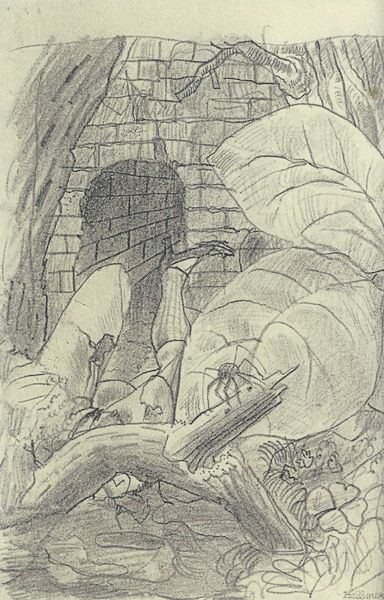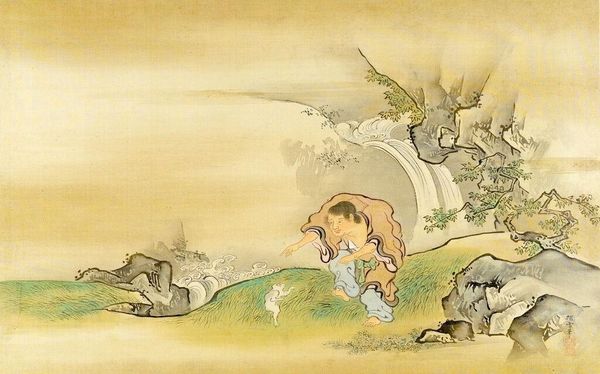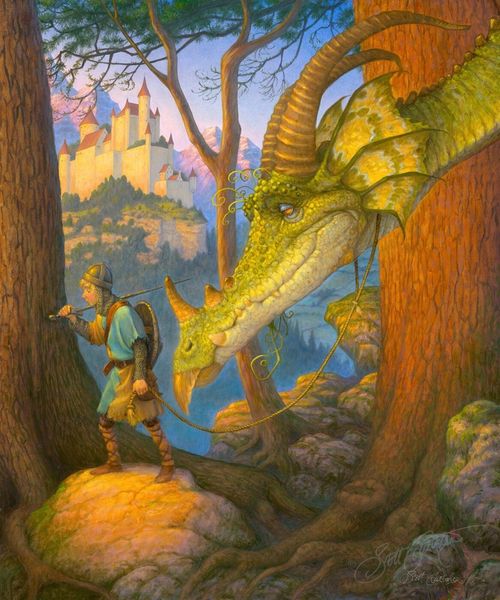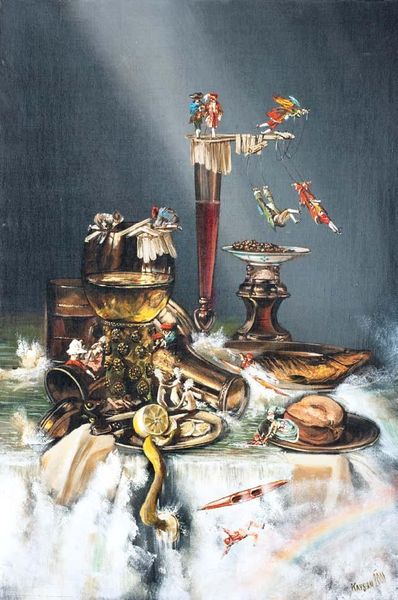
Copyright: Public domain
Curator: Theodor Kittelsen’s 1892 work, simply titled "Dragon", presents quite the scene. It looks to be crafted using coloured pencils and perhaps some watercolor as well. Editor: My first thought? Melancholy. There's this beautiful, muted palette and that very still, almost lifeless dragon at the center. The contrast with the chests filled with gold is certainly striking. Curator: Yes, that tension is certainly part of its power. Consider the dragon itself – likely born from some blend of artistic imagination mixed with Nordic folklore, but rendered in what appears to be simple pencil strokes on paper. This work lives within the late 19th-century vogue for revisiting national myths, reinterpreting them with newly available industrial pigments that lent brightness and subtlety to colour rendering. Editor: The positioning is so interesting too. Notice how the artist plays with light and shadow, almost staging a miniature theatre? The dark cave and dragon on the left pull us in, and then the eye is drawn toward the skull in the lower right—a stark contrast against the chests filled with precious things. The dragon skeleton appears a little like still life with landscape as theatre set design. Curator: Exactly. How does the death of the dragon become something consumable through painting? It touches on issues of class, power, and labor. Are we, as viewers, implicated in some dragon-slaying narrative through the act of spectating its death, in accessing its stolen treasure? Editor: That connects interestingly with romanticism. The artist frames the quiet death of a monster, the fading of some terrifying element into art itself. The use of such muted and refined art materials like watercolours and coloured pencil contrasts violently with our idea of the dragon. Curator: Precisely. So the tension, for me, arises from the labour put into producing the physical art and how the scene and the dragon came into being at the hand of an artist at the turn of the century. Editor: I think the artist cleverly used the composition and colors, and combined different symbolic pieces to draw viewers in, provoking curiosity and, yes, making you contemplate the transient nature of life. Curator: Well said, it shows how art is always intertwined with societal and material questions, not purely an abstract expression. Editor: Right back at you; observing such arrangements—a skull there, two treasure chests behind—reveal much about the artistic intent.
Comments
No comments
Be the first to comment and join the conversation on the ultimate creative platform.
